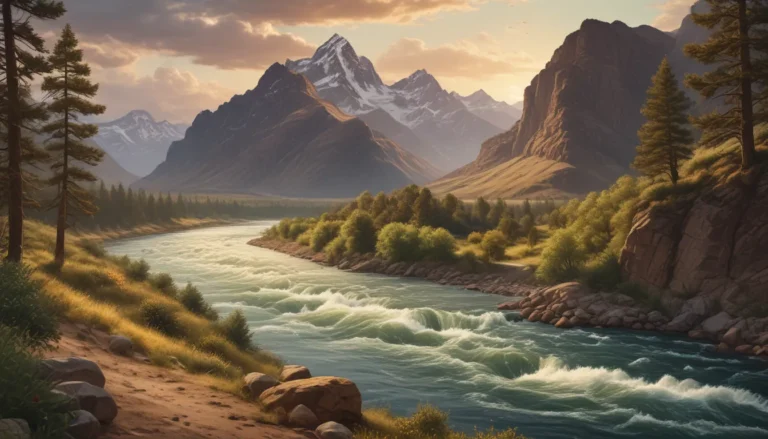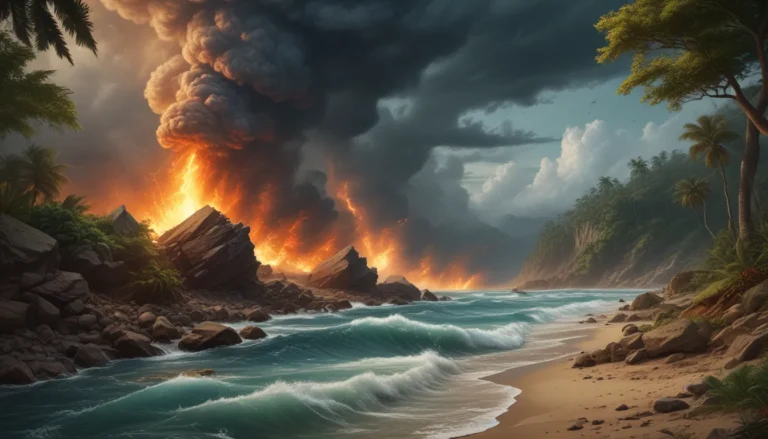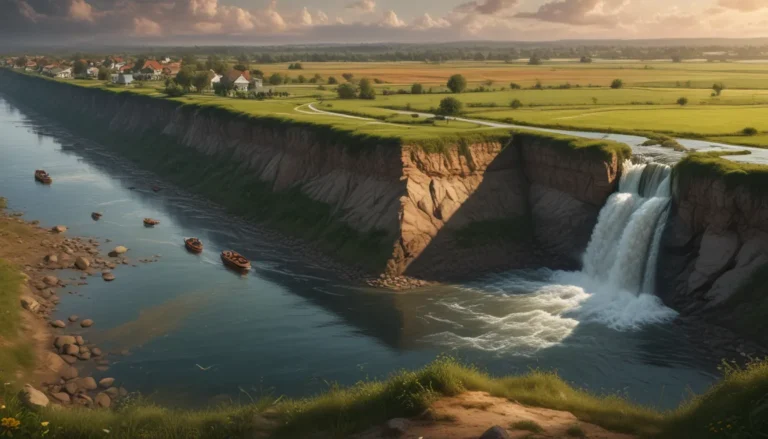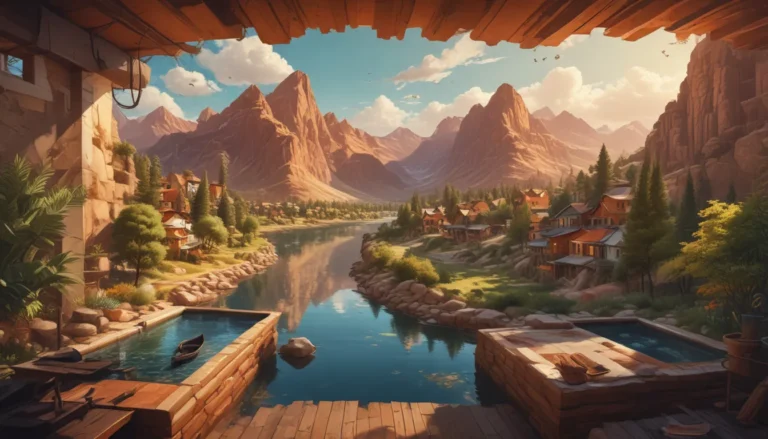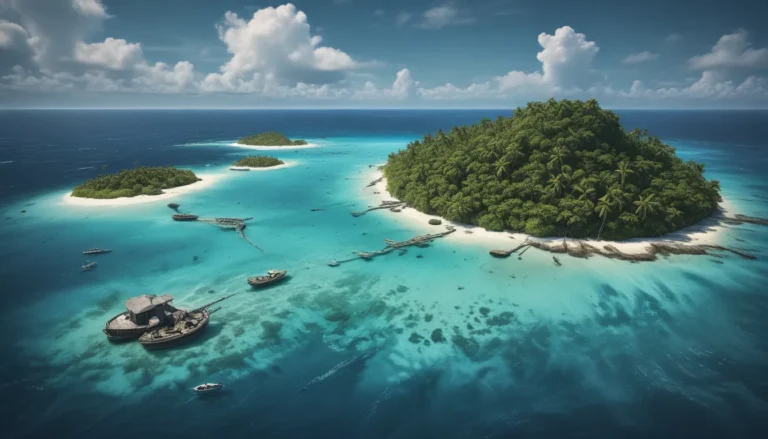A Note About Images: The images used in our articles are for illustration purposes only and may not exactly match the content. They are meant to engage readers, but the text should be relied upon for accurate information.
Have you ever marveled at the sheer power and beauty of calderas? These large volcanic craters, shaped by intense volcanic activity, hold a captivating history and offer a plethora of unique features that continue to intrigue scientists and adventurers alike. From their explosive origins to their diverse ecosystems, calderas are truly wonders of the natural world. In this article, we will delve into 20 fascinating facts about calderas that are sure to amaze and educate you about these remarkable geological formations. So, buckle up and prepare to explore the extraordinary world of calderas!
Unveiling the Mystery of Calderas
The term “caldera” originates from the Spanish word meaning “cauldron” or “cooking pot,” which aptly describes the bowl-shaped volcanic depressions formed by the collapse of a volcano after a powerful eruption. These geological formations play a crucial role in shaping the Earth’s surface and offer a myriad of unique features that continue to captivate scientists and nature enthusiasts around the globe.
A Glimpse Into Caldera Formation
Calderas are large volcanic craters that form when a volcano collapses into its empty magma chamber, creating a distinctive bowl shape on the landscape. The collapse is often triggered by explosive volcanic eruptions, which release immense amounts of ash, gas, and lava, leading to the formation of these impressive geological structures.
The Explosive Nature of Calderas
Due to the high pressure build-up within the magma chamber, calderas are often associated with explosive volcanic eruptions that have the potential to release massive amounts of volcanic ash and gases into the atmosphere. These eruptions can have far-reaching impacts on the surrounding environment and ecosystems.
Discovering Crater Lake National Park
Located in Oregon, USA, Crater Lake National Park is home to one of the most famous examples of a caldera. The stunning beauty of Crater Lake, set within the boundaries of the collapsed volcano Mount Mazama, attracts visitors from around the world eager to witness its azure waters and rugged landscapes.
The Majestic Yellowstone Caldera
The Yellowstone Caldera, situated in Yellowstone National Park, is one of the largest active calderas in the world. This geothermal wonderland boasts a diverse range of thermal features, including geysers, hot springs, and mud pots, making it a must-visit destination for nature enthusiasts and scientists alike.
Unveiling Underground Geothermal Activity
Many calderas exhibit underground geothermal activity, manifesting in the form of hot springs, geysers, and other thermal features. This geothermal energy source arises from the heat generated by the underground magma chamber, offering unique opportunities for energy generation and scientific study.
Exploring the Ring of Fire
Calderas can be found along the “Ring of Fire,” a major area in the Pacific Ocean known for its volcanic and seismic activity. This ring encompasses a vast expanse of active tectonic plate boundaries, resulting in the formation of numerous calderas and volcanic systems across the region.
Witnessing Volcanic Geysers in Action
Some calderas, such as the Waimangu Caldera in New Zealand, are renowned for their extraordinary volcanic geysers. These impressive natural phenomena, fueled by underground geothermal activity, punctuate the landscape with spectacular displays of steam and boiling water, offering a mesmerizing sight for visitors.
Harvesting Geothermal Energy
Calderas play a significant role in the generation of geothermal energy, tapping into the heat reservoirs created by underground magma chambers. This renewable energy source offers a sustainable alternative to traditional fossil fuels and has the potential to power homes, industries, and communities around the world.
Nurturing Unique Ecosystems
Calderas create unique ecosystems around their rims, providing fertile soil and diverse habitats for a wide variety of plant and animal species. The geothermal activity and nutrient-rich volcanic soils support thriving flora and fauna, showcasing nature’s ability to adapt and thrive in challenging environments.
Embracing the Benefits of Volcanic Ash
The volcanic ash released during caldera-forming eruptions is rich in nutrients, making the surrounding areas ideal for agriculture. Farmers utilize these fertile soils to cultivate crops and plants, benefiting from the mineral-rich deposits left behind by volcanic activity.
Uncovering Large Underground Reservoirs
The collapse of a volcano into a caldera creates a large underground reservoir that can hold vast amounts of water. This reservoir serves as a crucial water source for surrounding ecosystems and communities, highlighting the interconnected nature of geological processes and human livelihoods.
Witnessing the Formation of Secondary Volcanoes
Some calderas give rise to secondary volcanoes within their collapsed structures, known as resurgent calderas. These volcanic features add an extra layer of complexity and intrigue to the landscape, showcasing the dynamic nature of volcanic activity and landform evolution.
Reflecting on the Age of Calderas
Calderas can age over time and erode, resulting in a more subtle appearance on the surface. Despite their weathered exteriors, these geological formations continue to hold valuable insights into the Earth’s geology and past volcanic activities, providing a window into our planet’s tumultuous history.
Monitoring Volcanic Activity
Studying calderas is crucial for monitoring volcanic activity and predicting future eruptions. Scientists utilize a variety of monitoring techniques, including seismic data, gas emissions, and satellite observations, to better understand the dynamics of volcanic systems and mitigate potential hazards.
Understanding Volcanic Hazards
Calderas pose various volcanic hazards, including pyroclastic flows, ash fall, and lahars, which can have devastating consequences for nearby communities and ecosystems. By studying these hazards and preparing appropriate response plans, scientists and authorities can help protect lives and property in volcanic regions.
Exploring Submarine Calderas
Submarine calderas, formed underwater, are often associated with volcanic islands and seamounts. These underwater volcanic structures create unique habitats for marine species and play a vital role in the oceanic ecosystem, showcasing the interconnected nature of geology and marine biology.
Immersing in Volcanic Tourism
Calderas attract tourists from around the world due to their unique geological features and breathtaking views. Visitors flock to these natural wonders to witness the raw power of volcanic activity and marvel at the stunning landscapes shaped by millions of years of geological processes.
Unraveling Historical Significance
Calderas have played significant roles in shaping human history, often serving as sites for ancient settlements and civilizations. The fertile soils and geothermal resources provided by calderas have supported human societies for centuries, leaving behind a legacy of cultural heritage and environmental adaptation.
In conclusion, calderas are truly fascinating geological formations that offer a glimpse into the powerful forces shaping our planet. From their explosive origins to their unique ecosystems, calderas provide valuable insights into Earth’s geology and volcanic history. As we continue to study and explore these remarkable formations, we gain a deeper appreciation for the immense power and wonder of our planet’s natural processes.
FAQs: Unveiling the Mysteries of Calderas
-
What is a Caldera?
A Caldera is a large volcanic crater that forms when a volcano collapses during a massive volcanic eruption. -
How are Calderas formed?
Calderas are formed when a volcano erupts and empties its magma chamber, causing the summit of the volcano to collapse into the emptied chamber. -
Are Calderas dangerous?
Calderas can be dangerous, especially during volcanic eruptions. However, they can also provide unique opportunities for scientific study and tourism. -
Where can Calderas be found?
Calderas can be found in various parts of the world, including Yellowstone National Park in the United States, Santorini in Greece, and the Taupo Volcanic Zone in New Zealand. -
What ecosystems exist within Calderas?
Calderas often support unique and diverse ecosystems due to their geothermal activity. These ecosystems can range from geothermal plants and microorganisms to specialized plant and animal species. -
Can Calderas erupt again?
Yes, Calderas can erupt again in the future. However, the frequency and likelihood of future eruptions vary depending on various factors like the volcano’s activity and geological conditions. -
How do Calderas contribute to scientific research?
Calderas provide valuable opportunities for scientists to study volcanic activity, geothermal energy, and the Earth’s subsurface processes. They offer insights into the Earth’s history and help monitor potential volcanic hazards. -
Can Calderas be visited by tourists?
Many Calderas, such as Yellowstone National Park and Santorini, are popular tourist destinations due to their unique geological features and natural beauty. -
Are Calderas related to geothermal energy production?
Yes, Calderas often contain geothermal reservoirs and are utilized for geothermal energy production in some regions. -
Are all volcanic craters considered Calderas?
No, not all volcanic craters are Calderas. Calderas are distinguished by their large size and the collapse of the volcano’s summit during a significant eruption.
Caldera’s fascinating facts merely scratch the surface of nature’s awe-inspiring wonders. Whether you choose to explore the majestic Yellowstone Caldera, the serene waters of Towada Lake, or the breathtaking beauty of Santorini, each destination offers a unique glimpse into the power and majesty of our planet. So, which natural wonder will you explore next?
Your Feedback Matters!
Our commitment to delivering trustworthy and engaging content is paramount. Each fact on our site is contributed by real users like you, bringing a wealth of diverse insights and information. To ensure the highest standards of accuracy and reliability, our dedicated editors meticulously review each submission. Trust in our commitment to quality and authenticity as you explore and learn with us.

